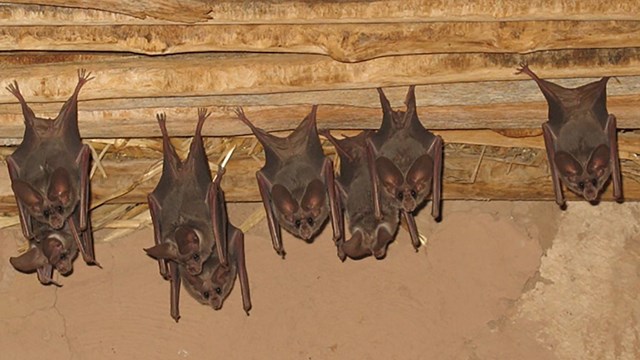We need bats if we want healthy and diverse ecosystems filled with a variety of organisms. Many bats feast on insects, some pollinate plants, and some bats spread seeds, too. Larger animals may depend on bats for prey. Aside from all these great services, bats are the only mammal that's capable of true flight, and they're simply fascinating.
The deadly fungal disease, white-nose syndrome (WNS), poses a real danger to cave-dwelling bats. WNS has killed 99% of some bat colonies. Tree-roosting and migratory bats face significant threats from wind turbines. Habitat loss and climate change also make it difficult for bats to survive and thrive.
But we can all help protect bats and their habitats! Try some of these ideas to help conserve bats. You can help bats in your own yard and community, and you can learn how to protect bats when you visit parks, too.
The deadly fungal disease, white-nose syndrome (WNS), poses a real danger to cave-dwelling bats. WNS has killed 99% of some bat colonies. Tree-roosting and migratory bats face significant threats from wind turbines. Habitat loss and climate change also make it difficult for bats to survive and thrive.
But we can all help protect bats and their habitats! Try some of these ideas to help conserve bats. You can help bats in your own yard and community, and you can learn how to protect bats when you visit parks, too.
Help Bats in Parks
- Stay out of caves when directed. The bats at risk for WNS often hibernate or raise young in caves. They need to be undisturbed so they can rest and raise their young.
- Decontaminate before going in a cave. It may be possible for humans to spread WNS from one cave into another. If you have visited another cave, make sure to decontaminate (or leave behind) your shoes, clothes, and gear before entering another cave.
- Leave bats alone. If you see a bat, do not disturb it.
- Tell a ranger if you see bats acting strangely. Rangers can take steps to protect both bats and people if a bat is behaving in an unusual way.
And no matter where you are, you can celebrate Bat Week in October every year!
Conservation At Home
Help Bats At Home!
Bativities
Help bats by learning more about them through some fun activities.

Celebrate Bat Week!
Bat Week is Oct. 24-31! Let's hear it for the bats! From pollinating to eating insects, bats make our world a better place.
Last updated: November 1, 2024
